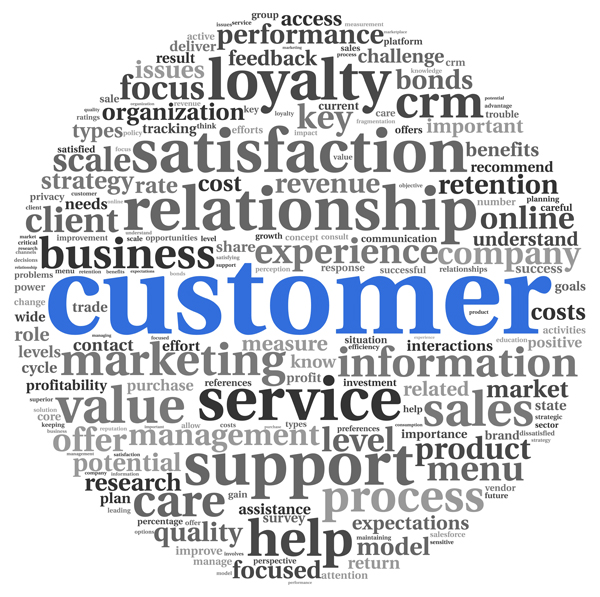One of my favourite quotes (for all the wrong reasons) is from the famously outspoken CEO of Ryanair, Mr Michael O’Leary:
“People say the customer is always right, but you know what – they’re not. Sometimes they’re wrong and they need to be told so.”[1]
Fast forward a couple of years, and a few profit warnings later, and Mr O’Leary seemed to have changed his tune, candidly admitting in 2014:
“If only I’d known being nice to customers was so good for business I’d have done it much earlier.”[2]
Now it doesn’t take a rocket scientist to figure out that treating customers fairly and providing a service that exceeds their expectations, will lead to long-term profitability. As a marketer, it still astounds me that companies (some of which I’ve sadly worked for) put so much effort into customer acquisition and brand visual identity that they forget the most fundamental building blocks of customer experience.
Customer Experience – enlighten me
The term ‘Customer Experience’ is a tricky one to define. In some organisations’ it is confused with ‘Customer Satisfaction’ and sits firmly under Operations; however, it is so much broader than that (in my humble opinion – and shared by many marketers and marketing scholars). Customer experience encompasses touch points across three stages – pre-purchase, purchase and post purchase – and takes in account physical and emotional responses and perceptions. A more refined definition is provided by Lemon and Verhoef (2016):
“Customer Experience is a multidimensional construct focusing on a customers’ cognitive, emotional, behavioural, sensorial and social responses to a firm’s offerings during the customer’s entire purchase journey.” [3]
So, what are the magic building blocks of customer experience I hear you ask. Well there’s no better place to start than looking at your brand promise. If businesses do not deliver on the promise they make to their customers then a poor experience is guaranteed. However, this delivery needs to be consistent across all customer touchpoints; remembering that a brand is only as good as its reputation and an individual’s own experience of it.
Let’s start with Brand
“A strong brand is now more dependent on customers’ direct experience with an offering and their relationship with the firm that produces it.”[4]
In an omnichannel world of confused customer touch points and very public reviews, the provision of a poor customer experience will make a dent in your company’s brand armour. As a marketing manager, I’m officially appointed as ‘Brand Champion’. Gone are the days when this was just fixated on visual identity…… whilst still crucial, I must admit (don’t hate me!) I’m a little more relaxed about it (as it’s constantly evolving!). What I’m not relaxed about is how the brand is represented at every stage of the customer journey.
Historically, a marketer would work with Sales (well if the Sales team welcomes them and vice-versa) to make sure that the enquiry to conversion touch-points were pitch-perfect, and then leave the rest to Operations. In some organisations (hopefully not many!) this is still the case. Personally, I’m not comfortable with this and as a marketer work with order processing, fulfilment and customer care to make sure we deliver…. and when we don’t, then there are processes in place where incidents can be discussed and lessons learnt. Every unfavourable experience of a customer touchpoint is a potential social media disaster waiting to happen.
Get out and experience the real world…. and Champion!
I’ve worked in a Marketing team of one (it can be lonely!) as well as being part of a 60+ Marketing department where Product, Customer Comms, Channel Comms & Customer Insight sat under the Head of Marketing. Whilst in the larger team we got close to the customer though consistent feedback from a very large Insight team, the real nuggets are gleaned by going out with Sales to visit clients, by sitting in the Contact Centre listening to calls, speaking with Customer Complaints (often so overlooked in marketing campaign evaluations and pre-planning). As a marketer surely it’s my job to be nosey? If the brand is damaged, then I can’t do my job properly and, at the end of the day, it’s customer perception that makes or breaks a brand because customers’ own the brand, not us!
To conclude (although I could speak about customer experience for a very long time!), the term is in danger of becoming yet another Marketing buzzword… a bit like (dare I say it) ‘customer value proposition’ (having been seconded into a Proposition Consultant role and a brief stint as a Proposition Manager I’m allowed to say that!). We pay lip service to it, but how do we implement across organisations to ensure each customer touch point delivers on the customer promise, and so reinforces brand values, which provides optimum value to both the customer and the business? Answers on a postcard please……..
[1] http://www.telegraph.co.uk/travel/lists/Michael-OLearys-most-memorable-quotes/
[2] https://www.ft.com/content/227f63fa-44cb-11e4-9a5a-00144feabdc0
[3] Understanding Customer Experience Throughout the Customer Journey, Lemon, K. and Verhoef, P., Journal of Marketing, November 2016 (p.70)
[4] Harvard Business Review – https://hbr.org/
